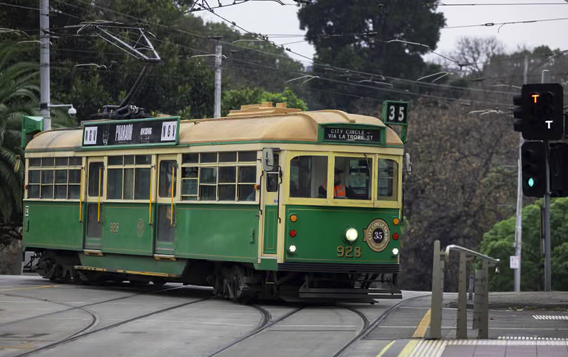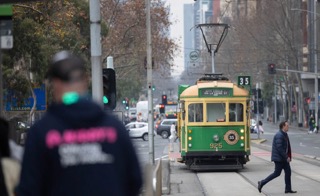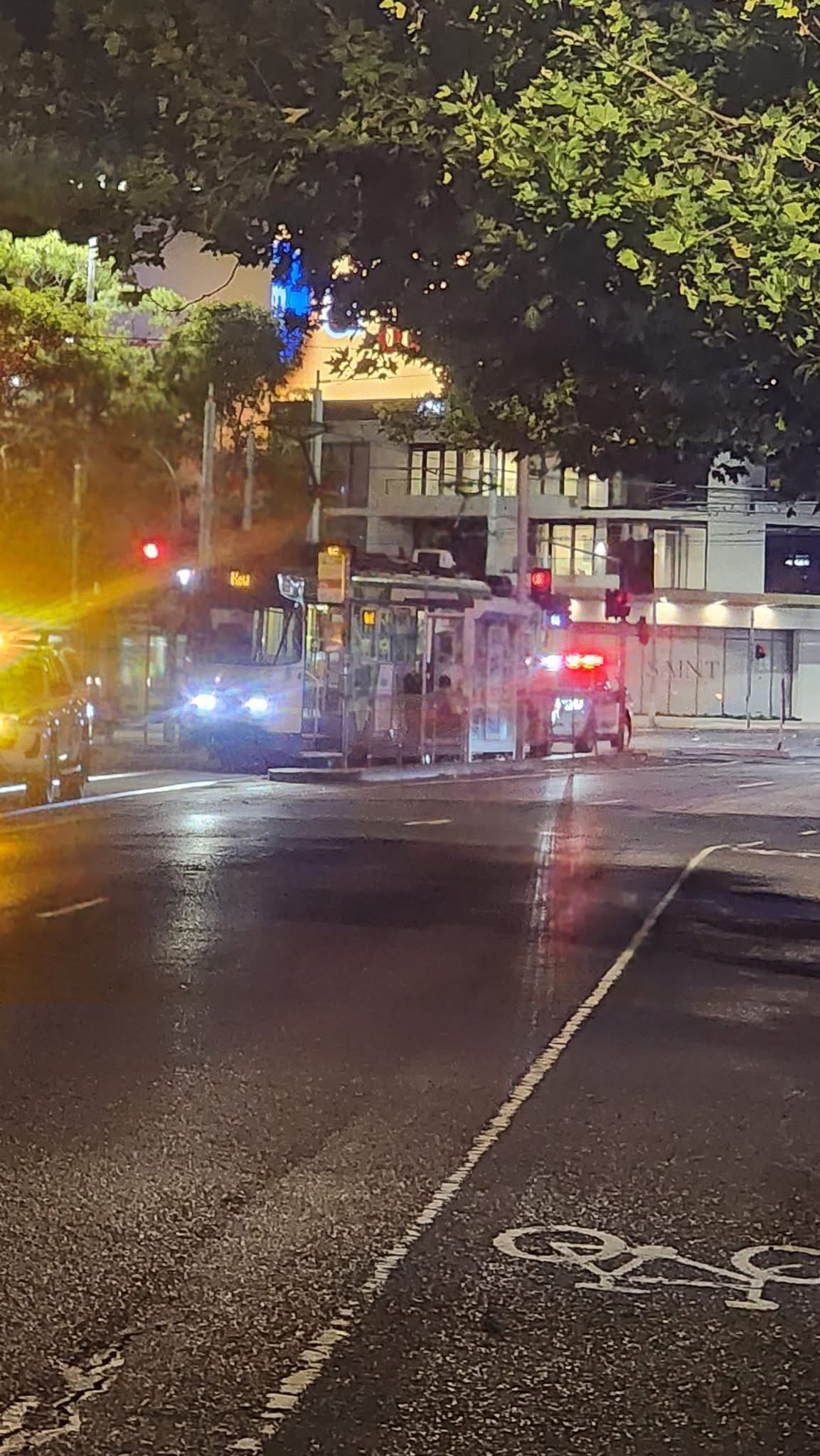When the Victorian government proposed making Melbourne’s CBD a free tram zone in 2014, the longtime public transport campaigner Daniel Bowen turned to Alanis Morissette to express his thoughts.
“It’s a free ride when you’ve already paid,” he wrote on his blog at the time.
Bowen predicted the Coalition’s plan, which was adopted by the incoming Labor government and rolled out on 1 January 2015, would fall short of its intended benefits for commuters.
He wrote that while the proposal would eliminate fares within the CBD, people would still need to pay to reach the city. Then, they’d hop on to trams packed with “freeloaders” taking advantage of the new zone at their expense.
Bowen also said it was “odd” it was being pitched to tourists when several of the city’s main attractions were outside the zone – some just a single stop away.
A decade on, Bowen, who is a spokesperson for the Public Transport Users Association (PTUA), says his predictions have come true.
“It has definitely caused more problems than it solved,” he says. “The trams are more crowded than ever. They are slower than ever. It is definitely not an upgrade for those paying customers.”
Over the years, several experts have also questioned the effectiveness of the free tram zone, including Infrastructure Victoria, which called for it to be scrapped in 2020.
But the zone, which extends from Queen Victoria Market to Docklands, Spring Street, Flinders Street station and Federation Square, remains hugely popular with tourists and visitors to the CBD.
The City of Melbourne lord mayor, Nicholas Reece, recently won re-election on a platform that included pushing the government to expand the zone even further.
“Extending the free tram zone is just common sense. A few small changes could connect commuters to more of Melbourne’s key destinations,” he says.
Reece says extending the zone would support local businesses, encourage visitors to the city, help ease cost-of-living pressures and “ensure that everyone can enjoy the very best our city has to offer”.
The problems with expansion
It is not the first time an expansion has been floated. A 2019 parliamentary inquiry examined whether the free tram zone should grow to include the University of Melbourne and the neighbouring medical precinct in Parkville, north of the city, as well as the Melbourne Convention and Exhibition Centre (MCEC) and casino, and along St Kilda Road to Prahran in the south, taking in the Arts Centre, National Gallery of Victoria, Royal Botanic Gardens and Shrine of Remembrance.
But both the department of transport and the tram network operator, Yarra Trams, opposed the idea at the time.
The department of transport told the inquiry expanding the zone would increase the total cost of the scheme from $15m a year to $28m a year, amounting to a more than 10% reduction in Victoria’s fare takings.

Yarra Trams said extra platforms would be needed to cope with the expected increase in patronage.
The department said when the free tram zone was introduced, the number of trips taken within the CBD almost doubled from 18.5m trips a year to 35.5m.
The majority of this increase was attributed to commuters taking “short tram journeys” instead of walking.
Yarra Trams said this surge in patronage “harmed the operational efficiency, comfort, passenger satisfaction, and farebox income of tram services” and forced trams to slow down throughout the CBD.
Dr Crystal Legacy, an associate professor of urban planning at the University of Melbourne, says the free tram zone went against one of the key objectives of a high-quality public transport system.
“The whole point of these sorts of incentives is to try to get people out of their cars and on to public transport,” she says. “Instead, we’ve seen a shift away from people walking short distances.”
Bowen argues it has also led to more cars around the city. He says the PTUA is aware of commuters driving to the edge of the free tram zone to take a tram for the remainder of their trip.
“There’s definitely a problem around Docklands in particular, but possibly other areas as well. If you’re a car park owner, you’d definitely market it to people – ‘Park here and catch a free tram the rest of the way,’” he says.
The parliamentary inquiry ultimately recommended expanding the zone to two stops – the arts precinct and the casino/MCEC stop.

The government, however, rejected the recommendation, arguing an expansion would exacerbate overcrowding issues and disadvantage commuters on longer trips.
Felicia Mariani, the chief executive of the Victorian Tourism Industry Council, says the footprint of the free tram zone “serves most attractions” Melbourne has to offer.
“I know that there is a push to extend it over to the Arts Centre, but the reality is you can just get off at Flinders Street and walk that little distance,” Mariani says. However, she says that given it isn’t as easy to walk to the MCEC, it should be included.
“We have so many visitors that come into this town for business events who mistakenly believe that because transport’s free in the CBD that it is included,” she says. “But they get caught out so many times because they’re going just one stop out of the zone.”
Legacy, meanwhile, supports expanding the zone to the city’s universities – or extending concession discounts to postgraduate and international students.
A government spokesperson says they have no plans to review the free tram zone. They point instead to temporary expansions of the zone during major events such as the Australian Open, when 4,500 additional services will take ticket holders to Melbourne Park at no extra cost.
“The free tram zone helps reduce boarding times at some of our busiest tram stops and allows passengers to travel freely and easily around Melbourne’s CBD,” they say.
Access for outer suburbs
Since the free tram zone, there have been several attempts at free and discounted public transport across the country and party lines.
At the 2022 Victorian election, the then opposition leader Matthew Guy proposed $2 public transport fares to ease cost-of-living pressures for commuters.
New South Wales had a 12-day fare-free period in April 2022, delivered as an apology amid ongoing industrial action across the city’s train network. Data showed a spike in both public transport trips around Sydney and consumer spending during this time.
In 2023, the NSW Greens proposed making public transport entirely free, and last year both Labor and the Liberal National party in Queensland committed to maintaining 50 cent fares across the state’s public transport network after the then premier Steven Miles introduced a popular six-month trial.

In Victoria, the Greens are using the upcoming byelection in Prahran to push the government to follow suit.
But Crystal warns that “cynical” political promises will only further entrench inequity.
She says the quality of public transport networks is poorest in the outer suburbs, where households have lower incomes, meaning the benefits do not flow to them.
“I do find that the conversation around freeness is a distraction from the main issue, which is we have an inequity in our public transport system,” Crystal says.
“What’s more important than cheap or free fares is improving access particularly for people in the outer suburbs.”
Bowen agrees: “If it’s quicker, easier and more convenient to drive, you’ll get in the car, even if it’s cheaper by public transport.”
The Guardian



